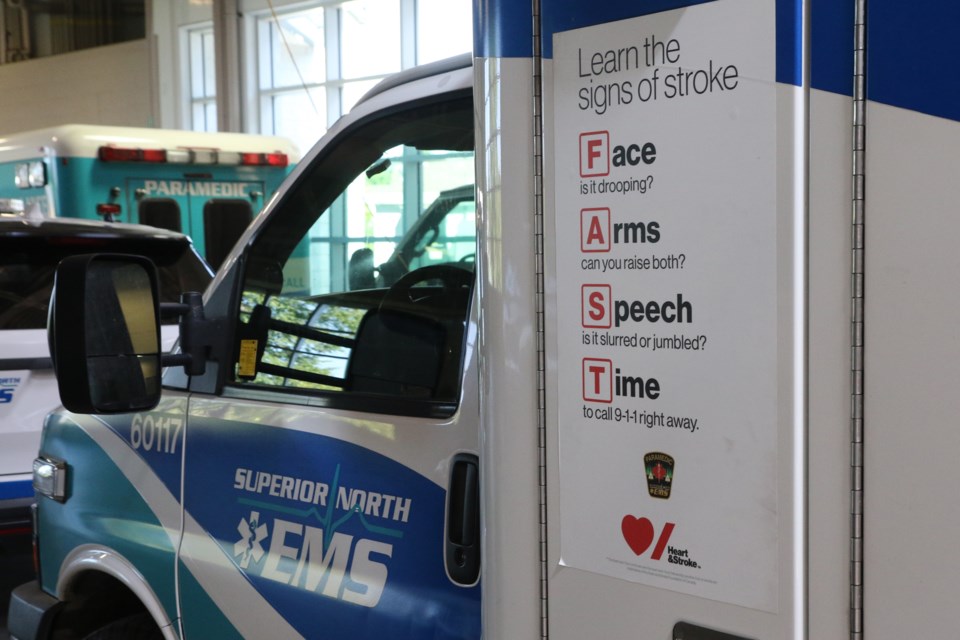THUNDER BAY -- Northwestern Ontario has the highest-rate of strokes in the province, prompting emergency responders and the regional hospital to try to better equip the public on what to do during those emergency situations.
New data provided by CorHealth Ontario shows that 47 per cent of people in Northwestern Ontario do not call 911 when experiencing signs of stroke.
Regional stroke network manager Trina Diner said this is troubling for a region that is “almost double the provincial average” for the rate of strokes.
There are a number of factors, Diner said, with age being chief among them.
“Our demographic tends to be older, and more sedentary,” she said.
Census data from 2016 shows that the region corresponding with the Thunder Bay District Health Unit has a median age of 44. The provincial average is 41.
Certain social factors also have a role.
“If you look at our population health status… We tend to eat, drink, and smoke a little bit more. It’s all of those factors that contribute,” Diner said.
Andrew Dillon, deputy chief of Superior North EMS, said the station is launching an initiative along with the Thunder Bay Regional Health Sciences Centre to increase awareness about signs of stroke.
“As first response providers, we need to make sure the people in our community access our organization to get to the hospital,” Dillon said.
Ambulances will now have ‘FAST’ decals placed on them: an acronym developed to promote stroke awareness.
“Face: is it drooping? Arms: can you raise both? Speech: is it slurred or jumbled? Time: to call 911 right way,” the decal reads.
Dillon said 77 ambulances within the Northwest region will be equipped with the ‘FAST’ decals.
“Over the past 18 months, we’ve undertaken extensive training in recognition of stroke signs and systems,” he said.
Strokes are the third-leading cause of death in Canada, and are the leading cause of disability.
“I think part of it is that [patients] don’t know what to recognize… they don’t realize the severity of what a stroke can do.” Diner said.
Statistics issued by the regional hospital notes that brain cells die at a rate of 1.9 million cells per minute during a stroke, making immediate response imperative.
“These patients are in a life-threatening situation, and they go to the front of the line basically,” Dillon said.
“Any time a patient is in a life-threatening, emergency situation, they go to the front of the line.”
